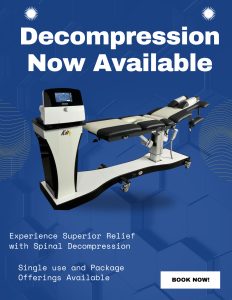It seems that there’s no end to aches, pains, and various syndromes in our bodies. The human back is particularly susceptible to aches and pains since our whole body hinges on our spine and spinal cord. Once you can put a name to the painful sensations that bother you, it’s time to start working on a treatment. Piriformis syndrome isn’t quite a household term, but it’s a more common condition than you might think.
So, what is piriformis syndrome? How can you tell if you have it? And how can you treat piriformis syndrome?
What Is Piriformis Syndrome?
The piriformis muscle is a small muscle in the buttocks. Despite its size, it can cause varying degrees of pain and issues. Piriformis syndrome occurs when the sciatic nerve gets pinched or squeezed by the piriformis muscle. The sciatic nerve runs from the lower spine, through the buttocks, and down the legs. Unfortunately, when the piriformis muscle becomes tight or spasms, the sciatic nerve can quickly become irritated.
It’s often difficult to pinpoint the cause of piriformis syndrome. Overuse, injury to the piriformis muscle, or even simply sitting for too long can cause the piriformis muscle to contract or spasm. In turn, this presses on the sciatic nerve, leading to various symptoms.
Symptoms of Piriformis Syndrome
The most common symptom of piriformis syndrome is a pain in the buttocks, which radiates down the buttock and leg. Sometimes, it can feel like a dull ache. Other symptoms may include numbness, tingling, and weakness. Additionally, piriformis syndrome usually affects only one side of the body.
If left untreated, piriformis syndrome can cause permanent nerve damage. This is why getting proper treatment is essential for this condition, and this can include chiropractic care.
How Chiropractic Care Can Help
Since the piriformis muscle is deep inside the buttock, reaching this muscle can be a little tricky. It further can cause additional problems for people whose job involves a lot of sitting, as the pain is often worse when sitting. On the other hand, too much exercise can also aggravate this muscle. So, what can you do?
With chiropractic care, you can get back to working your regular hours and enjoying your regular activities, without pain or other symptoms. A chiropractor works on the neuromusculoskeletal system, manipulating muscles, ligaments, and tendons. This means that a chiropractor can manipulate and realign the muscles in the legs, lower back, and hips. This realignment can help to alleviate the pain from piriformis syndrome and can smooth away the problems causing it in the first place.
Spasms, overuse, and muscle stiffness can all contribute to piriformis syndrome. Visiting a chiropractor, especially if you lead a very active lifestyle, is an effective way to prevent issues like piriformis syndrome.
This is because chiropractors know how to assess your muscles and joints and work out any weak areas. Posture issues, overuse, and muscle spasms can all increase your risk of developing piriformis syndrome, or maybe even sciatica later on. A good chiropractor will work alongside you to deal with these weak areas, relieve the pain from piriformis, re-align your body, and provide sciatic pain treatments.
If you suspect that you have piriformis syndrome or sciatica, book an appointment with your local chiropractor. Awaken Chiropractic can be your go-to Parker chiropractor. Whether you’ve recently experienced an injury, nagging back or buttocks pain, or you simply want to ensure you achieve your highest state of health and wellness, we can help. Book your appointment today.







